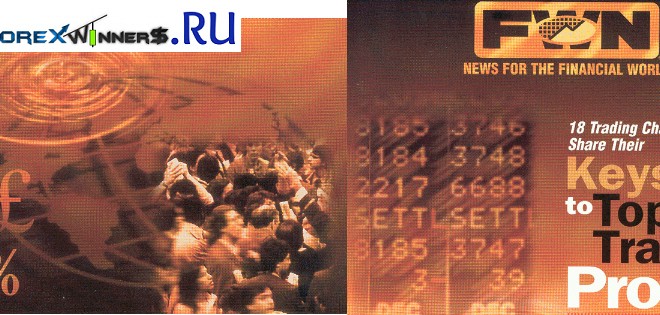Champions trading profits book
Volatility and liquidity are the two elements independent trader George Angell looks for in a market to trade. Currently, Angell exclusively trades the S&P 500 futures, putting on intraday trades only, never holding positions overnight.
“Liquidity and volatility are the two things you have to have. You can’t day-trade something like oats–it wouldn’t work”
Angell said.
Back in the early 1970s, Angell first became interested in the commodities markets. “I bought sugar and it went limit up …
then I bought copper and it went limit up, so I bought some more. Then it went limit down. I called my broker and told him to sell and he said to whom?” Angell said. “That’s when I realized I had more to learn,” Angell added.
In the early 1980s, Angell headed for the Chicago trading pits. He was a local trader at the MidAmerican Commodity
Exchange, focusing primarily on gold. While Angell now trades for himself, off-floor, from a screen, he called trading on the floor “an invaluable experience.”
“People on the floor are very short-term oriented” Angell said. “It taught me to get in, capture the trend, get your money and leave” he said.
Now, however, Angell prefers off-floor trading. “I’m alone in a room trading. When I’m on the floor there are thousands of people. It’s a social event. People want to talk about their positions, they want to have coffee. You lose your concentration… you
can’t see the forest for the tress,” Angell said.
Technology has revolutionized the capability of off-floor traders in the past 10 years, according to Angell. “The playing field has been leveled,” Angell said, explaining that technology has decreased the advantage the floor trader was once seen as having over an off-floor trader. “The key beneficiary is the public trader. The public can’t scalp, but they can day-trade,” he explained.
Angell disregards fundamentals, relying on technicals “100%.” He has developed two proprietary trading systems: LSS and Spyglass, which he utilizes in his day trading, along with “discretion and personal judgment.”
“Everybody needs some sort of mechanical system. It enables you to take the difficult trades you wouldn’t normally take on the seat of your pants” Angell noted.
Content :
GEORGE ANGELL KEYS IN ON VOLATILITY AND LIQUIDITY
JAYE BERNSTEIN: PSYCHOLOGIST TURNED TRADER
TOM BIEROVIC USES DISCRETION ON TOP OF HIS RULES
WALTER BRESSERT READS MARKET VIA CYCLES & OSCILLATORS
TOM DEMARK RELIES 100% ON MARKET TIMING
GEORGE FONTANILLS INCORPORATES OPTIONS TO A LOWER RISK
LEE GETTESS FOCUSES ON CONTROLLING RISK
CYNTHIA KASE RELIES ON PROPRIETARY TECHNICAL INDICATORS
GEORGE LANE STILL TRADING OFF STOCHASTICS AT AGE
GLENN NEELY BUCKS TRADITIONAL ELLIOTT ANALYSIS
GRANT NOBLE READS MASS MEDIA FOR CONTRARIAN SIGNALS
LINDA BRADFORD RASCHKE FOCUSES ON TECHNICALS
RICK REDMONT BASES TRADING ON WYCKOFF THEORIES
NGELO REYNOLDS SCALPS IN THE EURODOLLAR PIT
PERSISTENCE PAYS OFF FOR JOE STOWELL.
GARY WAGNER USES CANDLESTICKS TO MEASURE SENTIMENT
BEN WARWICK’S “EVENT TRADING” KEYS IN ON NEWS
LARRY WILLIAMS: TRAINING KEY FOR TRADING, RUNNING
 Forex Winners | Free Download Downlod free trading sysrems , indicators and forex E-books
Forex Winners | Free Download Downlod free trading sysrems , indicators and forex E-books

